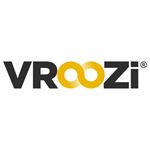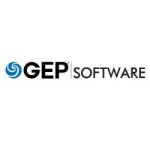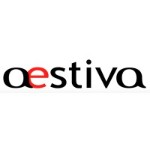A procurement strategy is a plan for acquiring goods, services, and works needed for the company or organization. It outlines the process for identifying and selecting suppliers, negotiation, contracting and monitoring supplier performance, and managing risks, cost savings, and sustainability.
A well-executed procurement strategy can save a business money, improve efficiency, and even give it a competitive edge. That’s why today, we’re going to talk about why procurement is essential, the different types of procurement strategies, and how to develop and implement a procurement strategy that will set your business up for success.
So, whether you’re a small business owner, a manager, or a procurement professional, this post is for you.
The Importance of Procurement Strategies
Procurement is a vital function for any business, and having a well-crafted procurement strategy can make all the difference. Here are just a few of the benefits of having the right procurement strategies in place:
Cost reduction: A procurement strategy can help a company secure better deals and lower prices by identifying and evaluating potential suppliers, leading to significant cost reduction.
Improved efficiency: A procurement strategy can streamline the process of acquiring goods and services, making it faster and easier for the company to get what it needs.
Better supplier relationships: A procurement strategy can help a company build more mutually beneficial relationships with its suppliers.
Reduced risks: A procurement strategy can help a company identify and mitigate risks associated with its suppliers and their goods or services.
Competitive edge: A well-executed procurement strategy can give a company a competitive advantage by allowing it to acquire the goods and services it needs at a lower cost, more efficiently, and with less risk.
In short, procurement strategies are a valuable tool that can help a company save money, improve efficiency, and gain a competitive advantage.

Developing an Effective Procurement Strategy Framework
Developing procurement strategies involve several key steps. These include:
Identifying the organization’s goals and objectives: A robust procurement strategy should align with the overall goals and objectives of the organization. This means considering budget constraints, timelines, and any specific needs the organization may have.
Assessing the organization’s current procurement strategy: Before developing a new procurement policy, it’s essential to take stock of its existing processes. This includes identifying any bottlenecks or areas for improvement.
Determining the organization’s procurement needs: Once the goals and objectives have been established and the current processes have been assessed, it’s time to determine precisely what the organization needs regarding goods and services. This includes things like quantity, quality, and delivery time.
Identifying potential suppliers: With a clear understanding of what the organization needs, it’s time to start identifying potential suppliers. This includes researching companies and their capabilities and reaching out to any existing suppliers to see if they’re interested in working with the organization.
Evaluating suppliers and selecting the best fit: Once potential suppliers have been identified, it’s time to evaluate them and determine the best fit. This includes assessing price, quality, delivery times, and the supplier’s ability to meet the organization’s specific needs.
By following these steps, organizations can develop a procurement process that meets their specific needs and helps them achieve their goals.
Identifying The Organization’s Goals and Objectives
Identifying the organization’s goals and objectives is a crucial first step in developing a relevant procurement strategy. This includes understanding the overall goals and objectives of the organization, as well as any specific goals related to procurement. This information will help guide the development of the procurement process and ensure that it is aligned with the organization’s overall objectives.
When identifying the organization’s goals and objectives, it’s important to consider things like budget constraints, timelines, and any specific needs the organization may have. For example, suppose the organization has a tight budget. In that case, the procurement strategy should be designed to help it get the most value for its money. If the organization has a specific deadline for a project, the procurement strategy should be prepared to ensure that the necessary goods and services are delivered on time.
Additionally, organizations may have specific needs, such as particular certifications, quality standards, or sustainability requirements, that must be taken into account when developing a procurement strategy. It’s important to understand these needs and ensure that the procurement strategy addresses them effectively.
Assessing the Organization’s Current Procurement Process
Assessing the organization’s current procurement policies is crucial in developing a successful procurement strategy. It allows organizations to identify any bottlenecks or areas for improvement in their current procurement performance. This can help organizations determine what changes need to be made to their procurement procedures to make them more efficient, cost-effective, and streamlined.
There are several ways to assess the organization’s current procurement activities, such as:
Conducting a process flow analysis involves mapping out the current procurement process and identifying any areas where there may be delays, inefficiencies, or bottlenecks.
Conducting a spending analysis involves analyzing the organization’s spending data to identify patterns and trends. This can help organizations identify areas where they may be overspending or where they may be able to negotiate better prices with suppliers.
Surveying employees: Surveying employees involved in the procurement process can provide valuable insights into the current operations, such as what works well and what doesn’t.
Auditing the current systems and tools: Evaluating the existing systems and tools the organization uses for procurement can help identify any limitations or areas for improvement.
Once the organization’s current procurement strategy has been assessed, organizations can use the information gathered to identify improvement areas and develop a new procurement strategy that addresses those areas.

Determining the Organization’s Procurement Needs
Determining the organization’s procurement needs is vital in developing a procurement strategy. It involves identifying exactly what goods and services the organization needs to achieve its goals and objectives. This can include the number of goods or services needed, the quality standards required, and the delivery times required.
There are several ways to determine an organization’s procurement needs, such as:
Conducting a needs assessment: This involves identifying the specific goods and services the organization needs and the quantities and specifications required. This can include the number of units required, delivery times, and the quality standards that must be met.
Reviewing the organization’s budget: Reviewing the organization’s budget can help to identify any constraints or limitations that may impact the procurement needs. This can help organizations prioritize their requirements and determine which goods and services are most important.
Analyzing the organization’s current inventory: Reviewing the organization’s current inventory can help to identify any gaps or shortages that may impact the procurement needs. This can include identifying items that are running low or no longer available from current suppliers.
Consulting with internal stakeholders: Consulting with internal stakeholders, such as department managers or project leads, can provide valuable insights into the specific goods and services that the organization needs.
Once the organization’s procurement needs have been determined, organizations can use this information to identify potential suppliers, evaluate them, and select the best fit. This will help organizations acquire the goods and services they need, in the required quantities and at the right time, to achieve their goals and objectives.
Identifying Potential Suppliers
Identifying potential suppliers is a crucial step in developing a procurement strategy. It involves researching and identifying companies that can provide the goods and services that the organization needs. This can be time-consuming, but it’s essential to find suitable suppliers that can meet the organization’s needs and goals.
There are several ways to identify potential suppliers, such as:
Online research includes researching companies and their websites, reviews, and ratings. This can help organizations identify companies with the capabilities and qualifications needed to provide the goods or services that the organization needs.
Industry associations and trade shows: Joining industry associations and attending trade shows can be a great way to meet potential suppliers and learn about new companies in the market.
Referrals and word of mouth: Organizations can also ask for referrals from other businesses or industry experts. This can be a great way to find reliable suppliers with a proven track record of meeting the needs of similar organizations.
Reaching out to existing suppliers: Organizations can also reach out to their existing suppliers to see if they’re interested in working with them on new projects or if they can recommend other suppliers.
Once potential suppliers have been identified, organizations can begin evaluating them to select the best fit. This includes assessing price, quality, delivery times, and the supplier’s ability to meet the organization’s specific needs.
Evaluating Suppliers and Selecting the Best Fit
Evaluating suppliers and selecting the best fit is important in developing a procurement strategy. It involves assessing potential suppliers and determining the best fit for the organization’s needs. This includes evaluating price, quality, delivery times, and the supplier’s ability to meet the organization’s specific needs.
There are several ways to evaluate suppliers, such as:
Reviewing the supplier’s qualifications: This includes assessing the supplier’s capabilities and certifications, such as ISO or quality standards, to ensure that they meet the organization’s requirements.
Assessing the supplier’s financial stability: This includes evaluating the supplier’s financial stability to ensure that they can meet the organization’s needs in the long term.
Checking the supplier’s references: This includes contacting the supplier’s references, such as other organizations that have done business with them, to get an idea of their performance and reputation.
Assessing the supplier’s experience: This includes evaluating the supplier’s expertise in providing the goods or services the organization needs to ensure they have the necessary skills and capabilities.
Negotiating with the supplier: After evaluating the supplier, organizations can negotiate with them on things like price, delivery times, and payment terms. This will help organizations to get the best deal possible.
Once the suppliers have been evaluated, the organization can select the best-fit supplier that meets their specific needs and can provide the goods and services at the right price, quality, and time.
Implementing an Effective Procurement Strategy
Once a procurement strategy has been developed, it’s crucial to implement and manage it effectively. Here are a few critical steps for doing so:
Developing a plan for implementing the procurement strategy: This includes outlining the specific steps that will be taken to implement the process, as well as identifying who will be responsible for each step.
Managing the procurement process: This includes monitoring the procurement process’s progress, ensuring deadlines are met, and addressing any issues that arise.
Managing supplier relationships: An effective procurement strategy requires strong relationships with suppliers. This includes regularly communicating with suppliers, addressing any concerns or issues that may arise, and working to build long-term, mutually beneficial relationships.
Continuously monitoring and improving the procurement strategy: A procurement strategy should be constantly monitored and evaluated to identify areas for improvement. This includes considering cost savings, delivery times, and supplier performance.
Implementing and managing a procurement strategy effectively requires dedicated effort. Still, by following these steps, organizations can ensure that their procurement strategy is effectively executed.
Benefits of Using Procurement Software
Procurement software can help organizations in several ways, some of which include:
Automation of procurement processes: Procurement software can automate many manual processes, such as creating purchase orders, issuing RFQs, and tracking deliveries. This can save time and reduce errors.
Streamlining communication with suppliers: Procurement software often includes tools for communicating with suppliers, such as online portals or messaging systems. This can make it easier for organizations to collaborate with suppliers and stay on top of things like order status and delivery times.
Improving supplier management: Procurement software can help organizations keep track of important information about suppliers, such as their contact information, past performance, and certifications. This can make evaluating and selecting suppliers and managing ongoing relationships easier.
Enhancing reporting and analytics: Many procurement software solutions include reporting and analytics tools that can help organizations gain insights into spending patterns, supplier performance, and overall procurement efficiency.
Compliance and audit trails: Procurement software can also help organizations comply with regulations and standards by providing audit trails, automated compliance checks, and other features that help organizations stay compliant.
Overall, procurement software can be a valuable tool for organizations looking to improve their procurement processes’ efficiency, accuracy, and effectiveness. It can automate repetitive tasks, streamline communication with suppliers, improve supplier management, enhance reporting and analytics, and help with compliance and audit trails.
Procurement Software Examples
SAP Ariba
SAP Ariba is a leading provider of cloud-based procurement software. The platform is designed to help organizations streamline their procurement processes, reduce costs, and improve supplier relationships. It offers many features, including e-sourcing, contract management, supplier management, and spend analysis.
Oracle Procurement Cloud
Oracle Procurement Cloud is a comprehensive procurement software solution that offers many features, including e-sourcing, purchase order management, invoice management, and supplier management. The platform is designed to help organizations automate their procurement processes, improve compliance, and gain greater visibility into their spending.
Procurify
Procurify is a cloud-based procurement software that offers features such as purchase order management, supplier management, budget tracking, and inventory management. It’s designed for small and medium-sized businesses, making it easy for users to create purchase orders, track expenses, and manage inventory from anywhere. It also offers mobile apps for iOS and Android, allowing users to access the platform from anywhere.
These are just a few examples of the various procurement software solutions available on the market. It’s important to research and evaluates different options to find the best fit for your organization’s specific needs and requirements. You can find hundreds of procurement tools listed in the Serchen Software Marketplace.
Conclusion
A well-crafted procurement policy is crucial for any organization. It helps align the procurement team with the overall goals and objectives of the organization. Developing a procurement strategy includes several key steps, such as identifying the organization’s goals and objectives, assessing the current procurement processes, determining the organization’s procurement needs, identifying potential suppliers, and evaluating and selecting the best-fit supplier.
This process enables the organization to identify and select suitable suppliers to provide the goods and services that meet the organization’s specific needs and goals. Implementing and managing a procurement strategy effectively requires a dedicated effort, including developing a plan, managing the procurement process, managing supplier relationships, and continuously monitoring and improving the purchasing strategy.
Procurement software can also be a valuable tool in this process by automating repetitive tasks, streamlining communication with suppliers, improving supplier management, enhancing reporting and analytics, and helping with compliance and audit trails. By following these steps and utilizing procurement software, organizations can set themselves up for success and ensure that their procurement strategy is effectively executed and continues to meet their needs over time.












